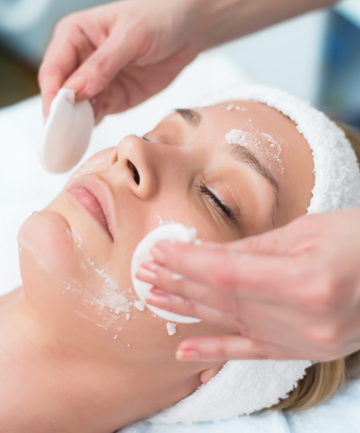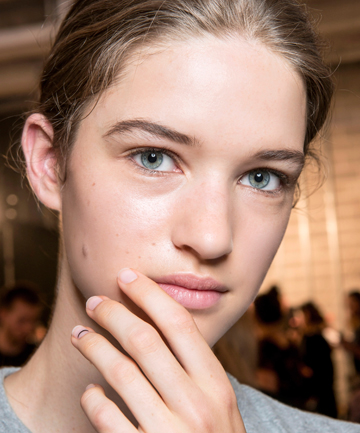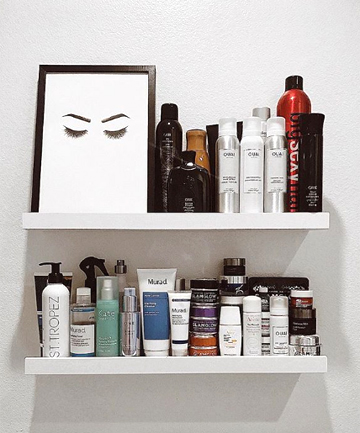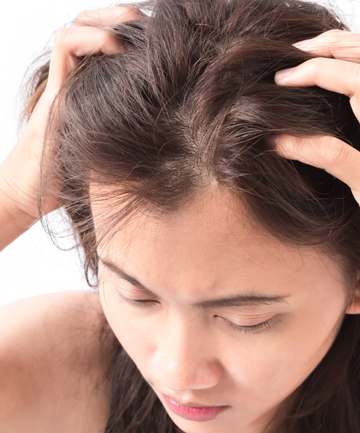Much like you keep up with the latest seasonal superfood, try out the latest athleisure trend and watch YouTube videos to pull off the coolest cat-eye, keeping up with the latest professional beauty treatments and trends ensures you're looking — and feeling your best. Each year, discoveries in the wide realm of plastic surgery, skin care and dermatological research provide new avenues and methods of improving our overall cell vitality. From impressive findings in hair loss to the emergence of the vampire facial, derms agree that 2018 will be a year full of unexpected beauty trends.
Here, a look at what to expect — and what to talk about at your next checkup.
Image via Imaxtree
Here, a look at what to expect — and what to talk about at your next checkup.
Image via Imaxtree
As magical — and relieving — as it would be to wake up at the age of 21 and bid all of those pesky zits away, it's estimated that up to 55 percent of the population battles adult acne. Thanks to hormones, hyper-sensitive skin and a slew of other causes, breaking out can sometimes be a lifelong struggle. Though it might seem like a slight adjustment, dermatologist Kristina Goldenberg explains the new dermatological approach to this all-too-common condition might be a confidence-builder for acne sufferers. Instead of working to get rid of the current breakouts before providing a plan to decrease the appearance of scars, more derms are treating both simultaneously. How come?
According to new research, even mild zits can leave a noticeable indent, making it more important to address both acne and scarring. Now, derms will combine acne treatments with chemical peels, laser treatments, microneedling and other anti-inflammatory approaches that provide a double-whammy treatment process, according to Goldenberg.
Image via Getty
According to new research, even mild zits can leave a noticeable indent, making it more important to address both acne and scarring. Now, derms will combine acne treatments with chemical peels, laser treatments, microneedling and other anti-inflammatory approaches that provide a double-whammy treatment process, according to Goldenberg.
Image via Getty
Considering 10 percent of the population battles some form of mild to severe eczema, director of cosmetic and clinical research at Mount Sinai Hospital, Dr. Joshua Zeichner, MD says many will consider beginning a prebiotic routine to ward away the symptoms. The idea is to help your skin maintain a healthy microbiome, which is the collection of natural microorganisms that live on our skin. When these are disrupted by breakouts, eczema or other issues, the normal flora is jeopardized. The use of prebiotics made of specialized sugars helps promote the growth of healthy bacteria. Regardless if you apply probiotics topically or take a daily supplement, the key is to focus on progress over time, as they begin to build healthy functions in your system.
Image via Imaxtree
Image via Imaxtree
We hate to break it to you, but if you've been prescribing to the same skin care regimen since you were a teenager — or even in college — you're due for an upgrade. Because everyone's chemical balances are widely different, using a face wash or a moisturizer merely because your best friend does isn't enough to keep your body's largest organ healthy and wrinkle-free. Instead, Goldenberg recommends hopping on the highly specialized bandwagon that more product lines are debuting. Thanks to thorough research, Goldenberg says more patients, dermatologists and brands recognize the vast importance of unique formulas made for targeted, unique needs. This means you have more to choose from to provide the best routine for your pores.
Image via @samiraradmehr
Image via @samiraradmehr
If your partner spends more time inspecting his scalp than you do your aging pores, there's good news for his receding hairline. As Goldenberg explains, while treatments for hair loss used to require transplant via surgery, the advancement and influx of new technologies have made the process and experience much less invasive. These include PRP (platelet rich plasma) and stem cell injection, both of which help to naturally prevent and replenish fallen strands. Director of Dermatology at Aesthetx, Dr. Amelia K. Hausauer, says that while the data around PRP is still new, it's convincing. "The evidence is mounting that you can use PRP, which is a component of your own blood rich in growth factors and signaling molecules, to grow hair," she explains. "I was skeptical at the start but what we found was pretty astounding." For appropriate candidates with the appropriate treatment regimen, we could achieve nearly 30 percent growth of new or previously imperceptible hairs and 30 percent thickening of existing hairs, she explains.
While those with severe and end-stage hair troubles might still need to go under the scalpel, access to these easier and less scary treatments will continue to rise for the younger crowd.
Image via Getty
While those with severe and end-stage hair troubles might still need to go under the scalpel, access to these easier and less scary treatments will continue to rise for the younger crowd.
Image via Getty







